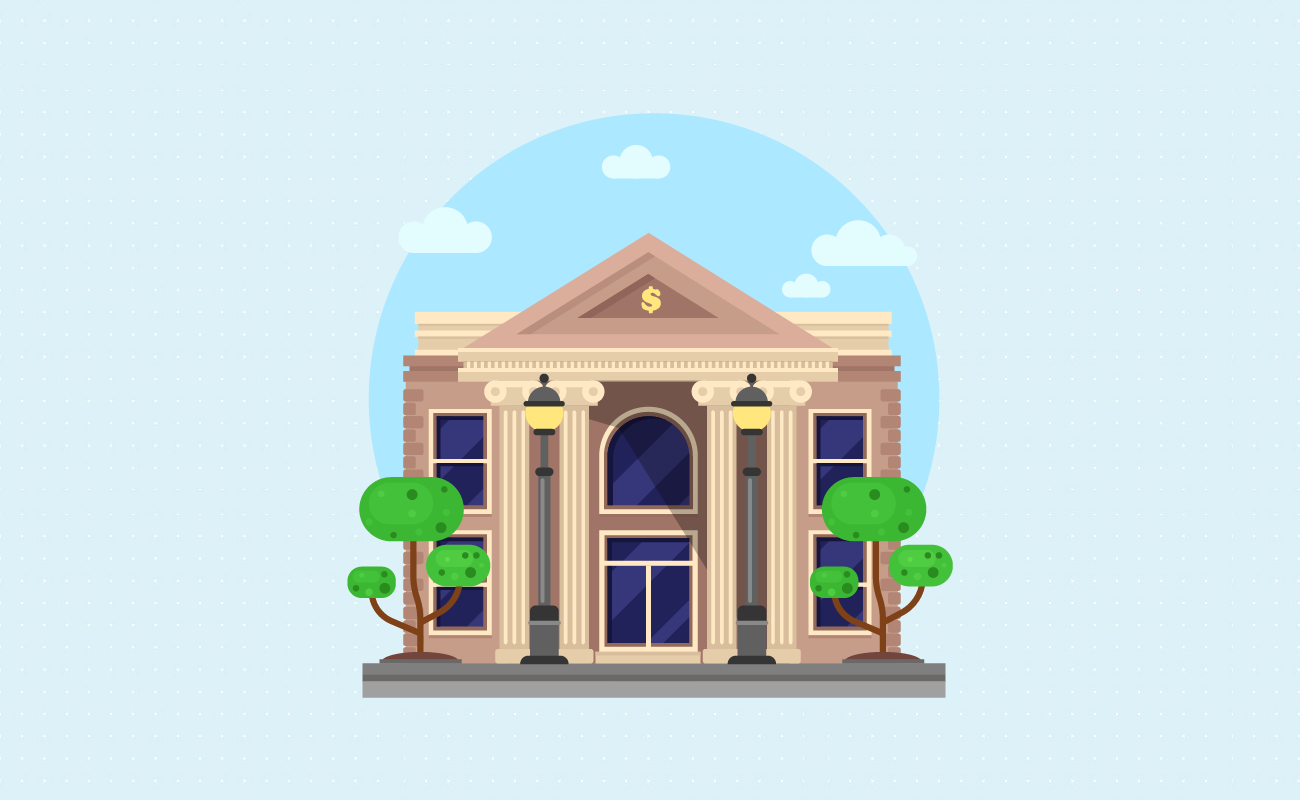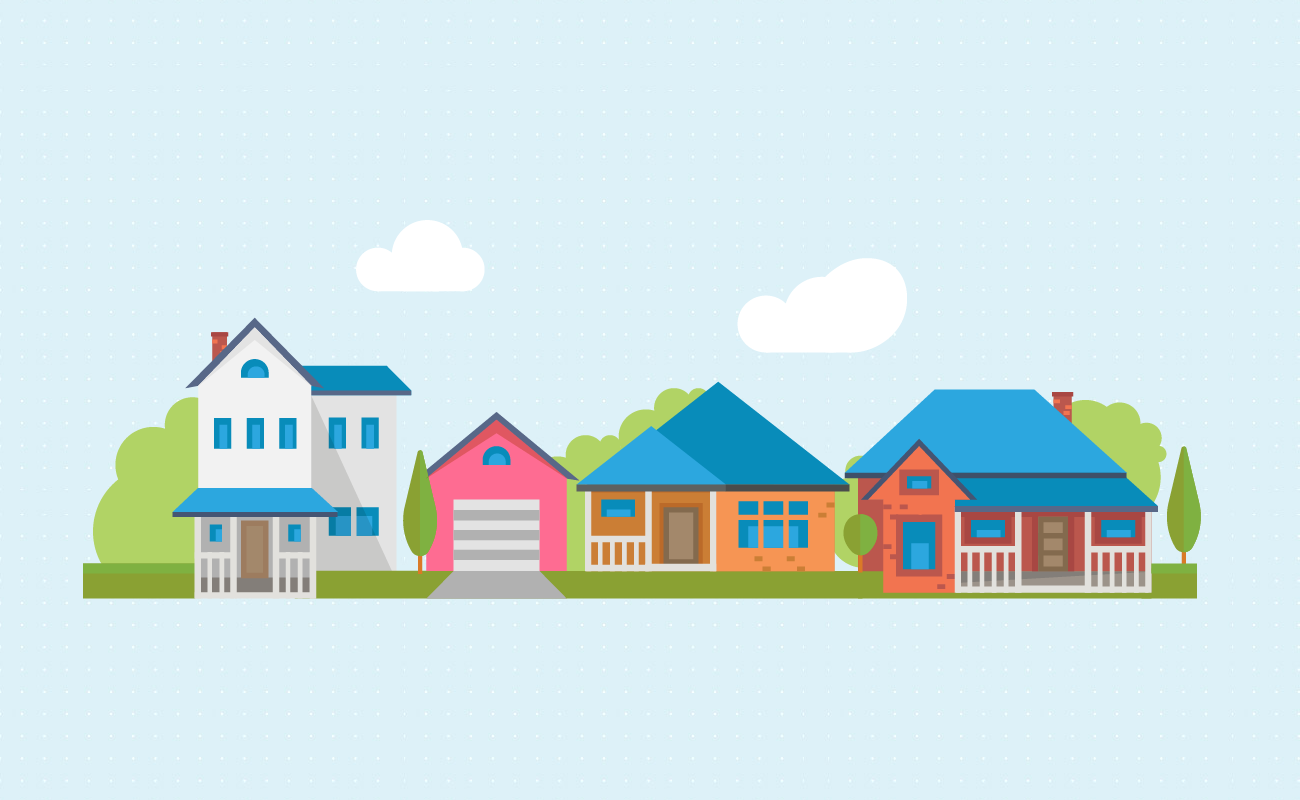Fixed Rates
30 yr
25 yr
20 yr
15 yr
10 yr
Compare Terms
Compare Rates
Real APR
Adjustable Rates
Qualification
Affordability
Renter Affordability
Rent vs Buy
Price per Square Foot
Jumbo
Home Sellers
 Mortgage Rate Comparison Calculator
Mortgage Rate Comparison CalculatorThis calculator will help you to compare monthly payments and interest costs of home mortgages at up to five interest rates simultaneously. Enter the loan details, the middle rate, how much you would like rates to increment by and we'll show you payments at related rates, helping you see when it might make sense to refinance a mortgage or how rate shifts could impact home affordability. To make comparisons simple the P&I portion of the loan are shown while other common homeownership expenses are offered as optional inputs. If you do not want to include these other inputs set them to zero. All loans in this calculator use the same loan term. If you would like to compare payments across different loan terms please use our mortgage term comparison calculator.
Guide published by Jose Abuyuan on October 9, 2020

Homebuying requires ample financial preparation and research. If you’re purchasing a house for the first time, the entire process may be overwhelming. Aside from having a good credit score and saving enough down payment, you need to shop for different lenders. This will help you secure a good deal with a low rate.
Despite advice from financial experts, many consumers do not compare rates with lenders. In a survey conducted by the Consumer Financial Protection Bureau (CFPB), around 47 percent of participants did not shop for rates. The process requires extra effort, which is why many are tempted to settle for a single lender or broker. But without comparing rates, you’ll likely spend more than you should on a home.
Our guide will discuss how mortgage rates work and the different factors that influence them. We’ll also talk about how shifts in rates impact monthly mortgage payments and total interest costs. Then, we’ll explain how varying loan terms and payment structures have different rates, and how each type can benefit homebuyers.
Mortgage rates are based on individual credit profiles, which means they differ per homebuyer. Generally, a credit-worthy borrower with a pristine credit history and high credit score is given a lower rate. Meanwhile, borrowers with lower credit scores and imperfect credit backgrounds are assigned higher rates.
For example, let’s suppose your loan amount is $300,000 for a 30-year fixed mortgage. Based on FICO credit score ratings as of October 7, 2020, here are corresponding mortgage rates assigned per credit score range:
| FICO score | Rate (APR) |
|---|---|
| 760-850 | 2.422% |
| 700-759 | 2.644% |
| 680-699 | 2.821% |
| 660-679 | 3.035% |
| 640-659 | 3.465% |
| 620-639 | 4.011% |

One of the best ways to obtain a low mortgage rate is to improve your credit score. You can do this by paying your bills on time and reducing your outstanding debt. A higher credit rating makes you qualify for more competitive rates. Before applying for a loan, make sure to check your credit report. Borrowers can get a free credit report every 12 months. You can request a free copy at annualcreditreport.com.
To secure a lower rate, borrowers may make a higher down payment on their mortgage. Taking extended terms like 30-year fixed mortgages are assigned higher rates, while shorter loans like 15-year mortgages have lower rates. Since inflation threatens to decrease the dollar value, longer payment durations are riskier for lenders. To hedge against this risk, lending institutions put higher interest rates on long-term loans.
Securing a low rate is a major consideration for homebuyers. This is why financial advisors recommend shopping for rates before accepting any deal. Once you secure a favorable rate, it will help you manage monthly payments and save you tens and thousands of dollars over the life of the loan.
To understand how mortgage rates affect your payments, let’s take an example and compare it with other rates. For instance, suppose you’re buying a house priced at $350,000 and you make a down payment of 20 percent worth $70,000. This decreases your loan amount to $280,000. If your reference rate is 3.25 percent APR, using the calculator above, let’s compare it with other rates.
| Mortgage rates (APR) | 2.75% | 3% | 3.25% | 3.5% | 3.75% |
|---|---|---|---|---|---|
| Monthly principal & interest payment | $1,143 | $1,180 | $1,219 | $1,257 | $1,297 |
| Total principal & interest payment | $411,507 | $424,977 | $438,688 | $452,637 | $466,821 |
| Total interest | $131,507 | $144,977 | $158,688 | $172,637 | $186,821 |
Note: You can use the calculator on top to estimate how much higher or lower your monthly payments will be once your ARM rate adjusts.
Based on the example, your monthly principal and interest payment (P&I) is lowest at 2.75% APR with $1,143. Meanwhile, you’ll make the highest monthly P&I payment at 3.75% APR with $1,297. If your interest rate is 2.75% APR, you’ll save $154 on monthly mortgage payments. The lower your interest rate, the more manageable your monthly payments can be. Monthly P&I payments slightly get higher as the rate increases by 0.25%.
At 3% APR, your monthly P&I payment will be $1,180, which is $37 more expensive than 2.75% APR. While at 3.25% APR, your monthly P&I payment will be $1,219, which is $39 higher than 3% APR. And by 3.5% APR, your monthly payment will be $1,257, which is $38 more expensive than 3.25% APR. Finally, at 3.75% APR, your monthly P&I payment will be $1,297, which is $40 higher than 3.5% APR.
Savings become more evident when we compare the total interest costs. Based on the table, you’ll spend the greatest total interest at 3.75% APR, which costs $186,821. On the other hand, you’ll spend the least on total interest at 2.75% APR, which costs $131,507. That’s savings worth $55,314 compared to taking 3.75% APR. Thus, to gain the most interest savings on your mortgage, you must choose the lowest possible rate.
If you secure 3.5% APR over 3.75% APR, your total interest cost will be $172,637. This means you’ll save $14,184 on total interest expenses. Meanwhile, if you obtain a deal with 3.25% APR over 3.75% APR, your total interest costs will be $158,688. This time, you’ll save $28,133 on overall interest compared to 3.75% APR. Finally, if you get at deal at 3% APR, your total interest will be $144,977. This saves you a total of $41,844 on interest expenses.
Our example shows that securing the lowest mortgage rate will maximize your interest savings for the entire life of the loan. Make sure to compare rates with at least three different lenders. This will help you get a better idea of general interest rates in your area. Then, make sure to choose the most favorable rate to increase your savings.

Economic factors drive changes in mortgage rates. Depending on market conditions and the performance of referenced index rates, mortgage rates may rise or fall. Let’s take a closer look at these factors and how they impact mortgage rate changes.
Mortgage rates vary depending on your state or county. A state’s mortgage rate is influenced primarily by national economic forces, and second by the condition of the local economy. If a state has frequent foreclosures, lenders tend to charge higher rates. There is a great correlation between states with high occurrence of unemployment and foreclosures. Unemployment is the main cause of foreclosures and falling home prices.
During the Great Recession from 2007 to 2009, massive unemployment caused widespread foreclosures, increasing costs for mortgage lenders. As a response, the Federal Housing Finance Agency imposed an “adverse market fee" to loans offered by government-sponsored enterprises, Fannie Mae and Freddie Mac. This adverse market fee has since been removed in 2015 when the housing market recovered.
In February 2020, ATTOM Data Solutions published U.S. states with the highest foreclosures. The report notes that one in every 2,841 housing units nationwide had a foreclosure filing. The following states showed the highest number of foreclosure filings:
Borrowers looking to finance homes in these areas may possibly pay higher mortgage rates due to greater foreclosure potential. If you have the option to move, consider locations with low foreclosure occurrence.
Mortgage rates are affected by the 10-year Treasury rate. Observing the 10-year Treasury rate helps consumers know when it’s beneficial to buy a house or refinance their loan. This is a benchmark that guides interest rates for fixed-rate mortgages.
The 10-year Treasury note is a loan you make to the U.S. government. It’s the only Treasury note backed by the U.S. government that matures within a decade. It’s a widely used debt instrument which signifies broad investor confidence. The 10-year Treasury rate refers to the yield or rate of return on your investment. Treasury notes are auctioned by the U.S. Department of the Treasury with a fixed face value and interest rate. These treasury products are sold to the highest bidder through initial auctions and secondary markets.
An increase in the 10-year Treasury yield indicates a rise in fixed interest rates for bonds with high credit risk. Investors buying bonds search for the best rate with the lowest default risk. Thus, if the rate on the 10-year Treasury note falls, rates across different investments with fixed rates also follow.
How does this work? When demand for 10-year Treasury notes is high, investors bid a higher rate than its fixed face value. As a result, this makes yields low. In this case, investors believe the low return is worth the default risk since 10-year Treasury notes are guaranteed by the U.S. government. Low yield on Treasurys indicate lower rates on mortgages.
On the other hand, when the demand is low, investors are looking to get more return on their investments. They bid less than the 10-year Treasury note’s face value, which results in higher yield. Therefore, high yield on Treasurys mean high rates on mortgages.
By observing the 10-year Treasury rate, consumers can get a better idea of when it’s affordable to purchase a house or refinance a mortgage. This enables homebuyers to borrow the same loan amount at a lower interest rate.

The Federal Reserve is responsible for setting the federal funds rate, which is the interest rates banks charge one another for overnight loans to meet reserve requirements. One of the most significant factors affected by the federal funds rate is the prime rate. The prime rate influences many consumer rates, including deposit rates in banks, bank loans, and ARMs. It also impacts rates for home equity loans and home equity lines of credit (HELOC).

ARMs are mortgages that start off with a low interest rate during the introductory period. After this period ends, your rate adjusts annually according to market index rates. If rates are low, this allows you to make low monthly payments, which may let you prepay you mortgage. However, beware of prepayment penalty costs before making extra payments early into the loan. Prepayment penalty charges may cancel any savings you make from extra payments.
The federal funds rate is based on the supply of money which is regulated by the Fed. Through monetary policies, the Fed aims to maintain economic stability as agreed with the Congress. The Fed’s role is to moderate long-term interest rates that help facilitate employment and stabilize prices.
When federal fund rates are low, this indicates the government is employing an expansionary policy. As a result, this creates a low-interest rate environment which helps stimulate employment and demand for goods and services. However, it also results in relatively high inflation.
Borrowers with ARMs can observe federal funds rates to determine mortgage rate changes. For instance, if the federal funds rate increases by 0.25 percent, the ARM rate will also increase the next time your rate adjusts. Take note that rate increases are limited by your rate caps, which comes in three types:
1
Initial adjustment cap – This is how much the interest rate can increase the first time it adjusts after the introductory period is through. This is usually 2 to 5 percentage points higher than the initial rate.
2
Subsequent adjustment cap – This cap dictates how high your rate can increase in the adjustment periods that follow. It is typically 2 percentage points higher than the previous rate.
3
Lifetime adjustment cap – This is the maximum rate increase allowed for the entire life of the loan. This cap is usually set at 5 percent, but other lenders may require a higher cap.
Furthermore, rates for many ARMs are now tied to the Secured Overnight Financing Rate (SOFR), which functions in place of the London Interbank Offered Rate (LIBOR). SOFR is a broad measure of the cost of borrowing cash overnight. It’s based on transactions in the Treasury repurchase market where investors offer banks with overnight loans secured by their bond assets.
Aside from the federal funds rate and SOFR, ARM rates also change depending on market conditions and the performance of a referenced index. Other common indexes include the following:

When rates fall, leading indexes such as CMT are more beneficial to the borrower. When interest rates rise, it’s better to have your mortgage indexed against a lagging index such as COFI.
When you’re buying a house, you’ll find different types of loans with varying term lengths and payment structures. Depending on your credit score and other financial qualifications, you can choose a mortgage that suits your budget.
Terms come in various lengths, from extended 30-year loans, to shorter loans such as 20-year, 15-year, and 10-year terms. You may also obtain 25-year loans, but they are not commonly taken by borrowers in the U.S. When it comes to payment structure, more consumers prefer taking fixed-rate mortgages for the convenience of unchanging monthly principal and interest (P&I) payments.
Others prefer taking adjustable-rate mortgages (ARM) to secure a low introductory rate. They also take it for the possibility of low monthly payments when rates decrease. ARMs come in straight adjustable rate terms that change right after the first year. Borrowers can also choose hybrid ARMs such as 3/1, 5/1, 7/1, and 10/1 ARM. For instance, if you take a 5/1, your rate is the same for the initial 5 years, after which it adjusts annually for the succeeding 25 years.
Moreover, borrowers looking to buy more expensive property can take advantage of jumbo loans. Also known as non-conforming conventional loans, these are mortgages that exceed the loan limits prescribed by the Federal Housing Finance Agency. Jumbo loans are suited for high-income consumers with excellent credit scores and stable sources of funds.
Shorter terms come with lower mortgage rates, while extended terms have higher mortgage rates. Short-term loans are assigned lower rates because they pose less duration risk to lenders. But take note: Shorter terms like 15-year fixed loans have higher monthly payments than 30-year fixed terms.
As of October 8, 2020, the following table shows different term lengths for fixed loans and their corresponding mortgage rates:
| Loan Term | Mortgage Rates (APR) |
|---|---|
| 30-Year Fixed-Rate | 3.05% |
| 20-Year Fixed-Rate | 3.00% |
| 15-Year Fixed-Rate | 2.56% |
| 10-Year Fixed-Rate | 2.54% |

The most commonly purchased home loan in America is the 30-year fixed-rate mortgage. The Urban Institute reported that 30-year fixed loans accounted for 74.4 percent of new originations in June 2020. Prior to this, 30-year fixed mortgages reached 81.1 percent in March 2020. However, due to COVID-19’s impact on the economy, it slid to 74.4 percent in Q2 of 2020.
The second most purchased home financing is the 15-year fixed-rate loan, which comprised 16.4 percent of the market in June 2020. Apart from loan purchases, the Urban Institute reported this share mostly accounted for refinances. It shows many consumers are driven to refinance their loans as rates dropped to historic lows.
On the third spot are ARMs which took up 1.8 percent of the market share in June 2020. ARMs are beneficial when mortgage rates are low, helping consumers prepay their loan. However, when mortgage rates increase, this can get very costly. For this reason, many borrowers with ARMs eventually refinance into a fixed-rate loan.
Other types of loan products, such as 10-year and 20-year terms, accounted for 7.4 percent of the market. While these are uncommon, they offer financing features that address specific consumer demands.
To give you an idea how mortgage rates vary per loan type, the table below shows rates for different loans as of October 7, 2020:
| Loan Type | Mortgage Rate (APR) |
|---|---|
| 30-year Fixed | 3.36% |
| 30-year Fixed Jumbo | 3.2% |
| 15-year Fixed | 2.87% |
| 15-year Fixed Jumbo | 2.64% |
| 5/1 ARM | 4.04% |
| 5/1 ARM Jumbo | 3.9% |
| 30-year Fixed Refi | 3.17% |
| 15-year Fixed Refi | 2.79% |
| Home Equity Loan | 5.11% |
| HELOC | 4.55% |
The rates above come with the following implications:
30-year fixed-rate loans typically have mortgage rates that are around half a percentage higher than 15-year fixed-rate loans. Lenders assign lower rates to shorter terms because they take on less duration risk. Extended terms such as 30-year mortgages are riskier for lenders because inflation threatens to decrease the dollar value over a time.
The table above shows that a 5/1 ARM rate is currently higher by 0.68% than a 30-year fixed loan. However, ARM rates are usually at par with 15-year fixed mortgages or are slightly lower by a fraction of a percent. Meanwhile, fixed-rate loans are typically assigned higher rates than ARMs because lenders need to predict interest changes over time.
Historically, jumbo loans have higher mortgage rates than conforming conventional loans. This makes sense, since more expensive loans entail greater risk for lending institutions. But since the latter part of 2013 until 2018, jumbo mortgage rates have become lower than conforming loans. This is attributed to favorable economic conditions where lenders offered competitive jumbo rates to match conforming loans. In our example, a 30-year fixed jumbo loan is slightly lower than a 30-year fixed mortgage by 0.16 percent. But in times of economic crisis, the industry plumbing which keeps the conforming loan market strong does not really exist for jumbo loans. As lenders pull back and get more stringent with who they are willing to lend large sums of money to, the spread between conforming and jumbo loans increases. Consumers grow cautious about making larged high-leveraged purchases when the economy is weak, further dampening the demand for jumbo loans.
Based on the example, a 30-year fixed refi is slightly lower by 0.19 percent than a 30-year fixed-rate loan. Since rates have dropped in 2020 due to the COVID-19 crisis, many consumers have taken advantage of the low rates to refinance their loan. Fannie Mae projected 2020 to be a record year for first mortgage originations with a total volume of $3.9 trillion.
Second mortgages generally have higher mortgage rates than first lien loans. In this example, HELOCS and home equity loans have mortgage rates that are 1.75% to 1.19% higher. Second mortgage lenders take on more risk than first mortgage lenders when borrowers default. Thus, they impose higher rates.

With many financing options in the market, it can be hard to decide on a loan. When should you consider a 15-year fixed mortgage over a 30-year fixed term? And what are the benefits of an adjustable-rate mortgage (ARM) over a fixed-rate term? The following sections discuss the pros and cons of 30-year fixed loans, 15-year fixed loans, and ARMs. They will also indicate what type of borrower is a good fit for these types of loans. Knowing your options will help you decide which loan will suit your needs.
If you’re a first-time homebuyer with limited income, a 30-year fixed mortgage can be a good option. The extended term comes with affordable monthly payments compared to shorter terms. It also allows you to qualify for a larger loan amount which you might not get with a shorter term. Larger financing will enable you to purchase a bigger home or choose property in a better neighborhood. And since it’s a fixed term, it assures your monthly principal and interest payments remain the same throughout the loan. 30-year fixed mortgages are a good fit for consumers who want to prioritize high-interest debts before focusing on their home.
Cons
On the downside, an extended loan term builds home equity much slower. You’ll be in debt for a longer period of time, which means you might pay for it until retirement. 30-year fixed mortgages also have higher interest rates than short-term loans. As a result, you’ll pay tens of thousands of dollars more on total interest costs compared to a 15-year fixed term. That’s money you could have saved for your retirement funds or your child’s college education.
15-year fixed loans have lower rates compared to 30-year fixed terms. They help you build home equity faster, paying off your mortgage in half the time. Likewise, the shorter duration means you’ll spend less on total interest costs compared to a 30-year fixed term. If you have a stable income and you’re looking to pay your mortgage sooner, consider a 15-year fixed mortgage. This is a good fit for consumers who do not have other high-yield investments, who prefer to focus on gaining home ownership/home equity.
Cons
On the other hand, taking a 15-year fixed term comes with higher monthly payments than a 30-year term. This is the trade-off for the lower rate and paying down your loan faster. Make sure you’re comfortable with your monthly budget if you decide to take this option. If your budget is too tight, you might have a problem making monthly payments in the future. Moreover, the short term means you might not qualify for more attractive homes with a higher monthly payment. When this happens, you might have to settle for a more affordable house.
If your priority is a consistent budget with the same payments, then a fixed-rate loan will work for you. It’s also ideal for people who intend to live longer in a home. Fixed-rate loans are commonly taken by borrowers who believe mortgage rates are likely to rise. This option is a good fit for consumers who can afford to make monthly payments at market rates.
If you’re a high-income borrower with stable funds, consider an ARM especially when there’s a substantial decrease in market rates. The low introductory payments can help you prepay your mortgage. This allows you to manage the risk of making higher payments when mortgage rates rise in the future. You can eventually refinance to lock in a low rate.
ARMs are suited for consumers who believe rates are likely to fall. These are people with high-incomes who can manage market volatility. They also have higher yield investments that earn significant returns. People also take ARMs when they do not intend to stay long in a house. They eventually sell the home after a couple of years. To discourage this, many ARM lenders impose steep prepayment penalties. Be mindful of this expensive cost if you decide to sell your home early. House flippers also use ARMs to take advantage of the low introductory rate before selling a house.
The table below compares the pros and cons of fixed-rate loans with ARMs.
| Loan Type | Fixed | Adjustable |
|---|---|---|
| Pros | Monthly P&I payments remain the same even if market conditions fluctuate. Helps you build substantial equity right from the start. No surprise payment increases, easier to budget. | Usually comes with lower initial mortgage rates. Comes with lower monthly payments during the introductory period. |
| Cons | Typically comes with higher upfront interest rate as a trade-off for stability. If market interest rates fall, your mortgage rate stays locked in for the entire loan. | Once the introductory period ends, your monthly payments can increase significantly. You must have enough funds to cover increasing payments if rates rise. Harder on your budget because payments change. |
| Refinancing | If rates drop really low, you can still refinance at a lower rate. A fixed-rate loan locks in an existing rate and still allows you to refinance at a lower rate | ARMs can be refinanced into fixed-rate loans. You can refinance into an ARM once the introductory period ends. Some loans with below-market introductory rates may have prepayment penalties. |
Comparing mortgage rates from different lenders will help you secure a favorable deal. Keep in mind that a lower mortgage rate will make your monthly payments more manageable while maximizing your interest savings. Moreover, try to improve your credit score to be eligible for more competitive rates.
Many factors affect mortgage rates, such as the state of the national and local economy. The 10-year Treasury yield impacts changes in fixed mortgages rates. On the other hand, the federal funds rate affects mortgage rate changes for ARMs.
Furthermore, the type of loan you choose also determines your mortgage rate. Fixed-rate loans typically come with higher rates than ARMs. ARMs usually start off with a lower rate, which adjusts higher once the introductory period is through. Finally, long-term loans have higher rates than shorter loans because they carry greater duration risk for lenders.
Need to learn more about adjustable-rate mortgages? Check out our guide on our ARM payment calculator.
Jose Abuyuan is a web content writer, fictionist, and digital artist hailing from Las Piñas City. He is a graduate of Communication and Media Studies at San Beda College Alabang, who took his internship in the weekly news magazine the Philippines Graphic. He has authored works professionally for over a decade.